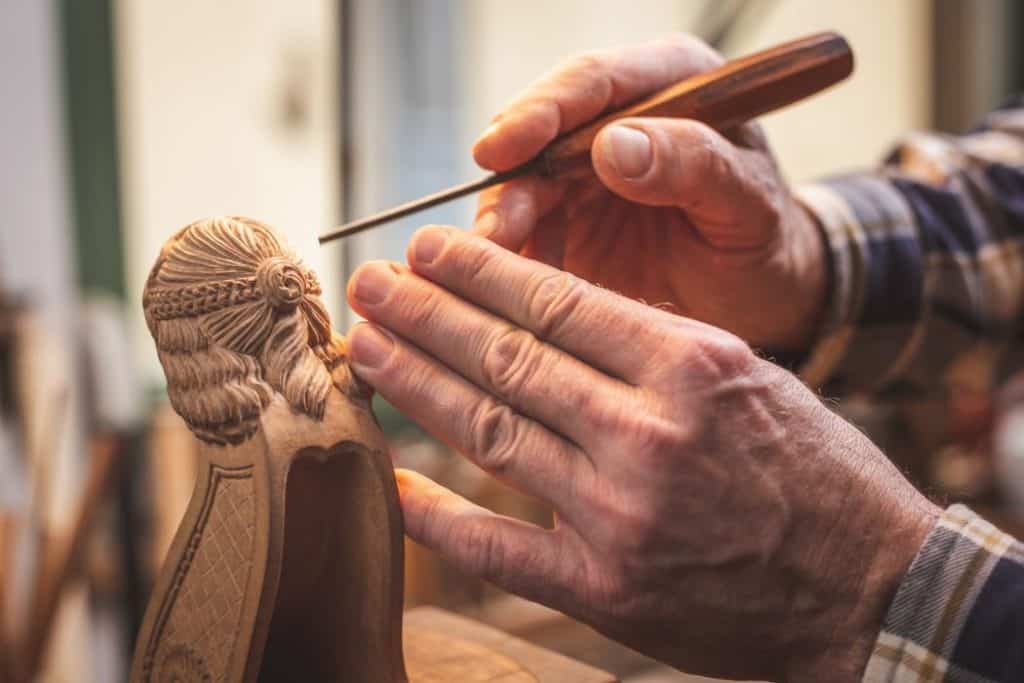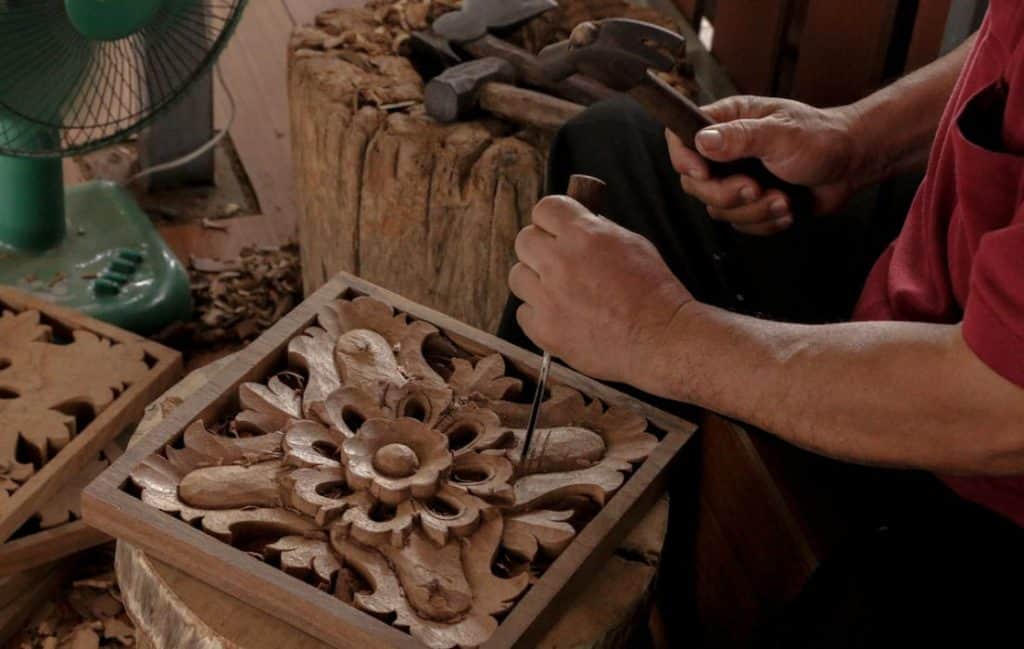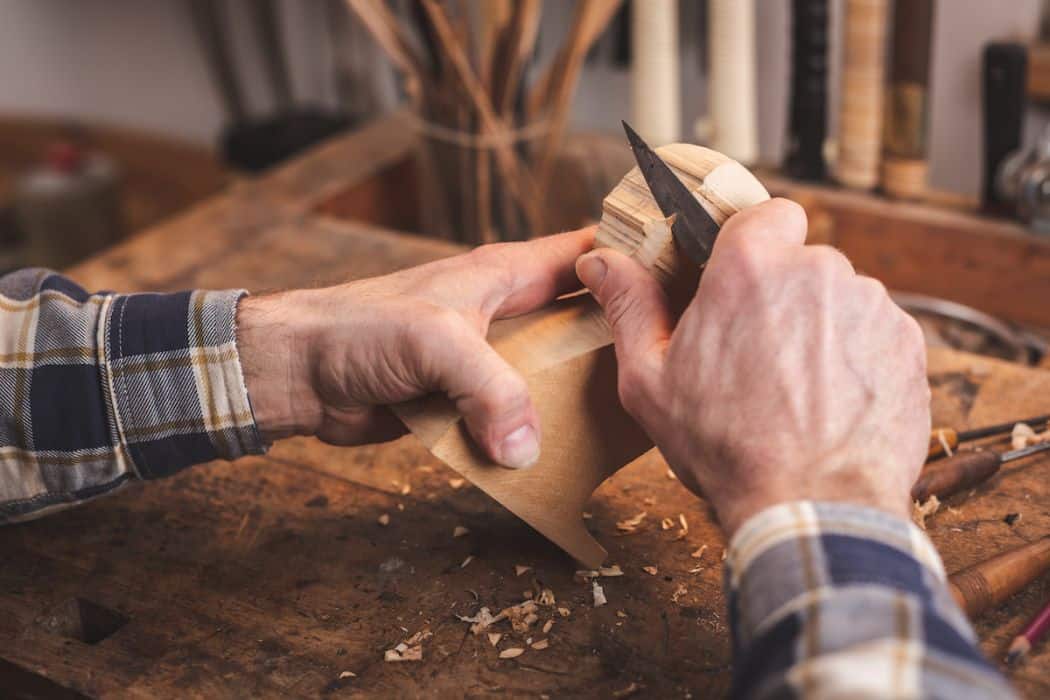Wood carvings can last for ages – years, decades, possibly even centuries. Archaeologists have discovered carvings that are thousands of years old.
Many factors promote longevity or lack thereof, starting with the type of wood, the craftsmanship and care taken to create, finish and maintain the carving and ultimately, the long-term care to display the carving in spots where it does not get harmed by natural elements or pests.
In other words, preserving wood carvings takes some knowledge, skill and perseverance. Many precautions are common sense – excessive exposure to sun, rain or fluctuations of temperature are not good for carvings. Let’s think through the process.
The Main Factors to Consider
Choices made to ensure the longevity of wood carvings depend on whether the carving going to be placed indoor or outdoor. This may influence a number of other decisions, which include:
- What kind of wood should be used?
- Should green or dry wood be used?
- How should the wood be treated and finished?
- What kind of maintenance treatments can be undertaken to ensure a longer life?
- What are the dos and don’ts in terms of whether the carving can be placed or stored?
- How can you ward off pests or natural infestations?
These points are discussed in greater detail below. But before that …

The Type of Carving is Relevant
For the rest of this discussion, we will be talking about standalone carvings, as opposed to etchings on trees, wood panels etc.
The reason is obvious. An etching on a tree will likely last as long as the tree itself, which could be hundreds or thousands of years. Etches on paneling will likely last until the paneling is dismantled or falls apart, which could again be a long time.
The Types of Wood to Use
The exact right wood must possess a composite set of characteristics (softness, ability to hold detail and uniformity of grain) that may be difficult to find consistently in a single species. Choices may boil down to evaluating specific pieces as you choose pieces to craft. Some of the species favored by carvers include:
- Optimum woods found in the US – Basswood and Butternut tend to be among the easiest to work with, being straight grained, soft without falling apart and of even texture.
- Workable woods found in the US – Cherry, Teak, Birch, Walnut, Red Oak, Maple and Sycamore are harder to work with, for different reasons, but can produce great carvings if they can be worked successfully.
- Internationally available Woods that are suitable – Bamboo, Tupelo, Pear, Lime, Ipe (Brazilian Walnut) and Mahogany are trees that are not commercially grown in North America, but each have characteristics that make them attractive to wood carvers.
Some other species, such as pine, which has a tendency to deteriorate over time, may need pressure treatment or similar work done if used, especially in outdoor conditions.
Also, some of the above varieties are not easy to carve, which may be a consideration, especially for carvers who do not consider themselves to be experts.
Should You Use Green or Dry Wood?
This can be an intricate question. The basic concern with moisture in wood is that it cracks as the exterior dries and the water in the interior literally “spills” or bursts the sides. For this reason, drier wood is preferred for carvings – especially those left exposed to the elements.
Unless you use kiln-dried wood, it may be difficult to find one that is completely dried, regardless of how long it has been stored. Experienced carvers seal the ends of blocks for this purpose.
How Should the Wood be Treated and Finished?
Regardless of the (dryness of the) wood you buy, expect it to keep checking (i.e. cracking) over its lifetime. Exposure to outdoor elements or other extreme elements will make it worse. The log will “breathe” – the moisture tends to come and go due to humidity changes.
Remedies exist for this. How much you use depends on the size of the carving and how bad the issues are. Some of the options are:
- Coat/paint the carving in one week, then one month and then each year after it is completed and installed. In some cases, it may be worthwhile to do so twice a year.
- Do not coat underneath the base.
- Coating with urethane, applying a coat of paint, polishing with natural oils and beeswax are all measures that will help prolong the life of a carving, as well as improve luster. Tung oil, Danish oil and other such materials are frequently used.
- Over time, cracks will tend to appear – use caulking or similar means to seal and paint along seams to maintain the integrity of the wood.

Where Should Wood Carvings be Displayed and/or Stored?
There are some basic dos and don’ts:
- Do not put the carving in direct sunlight – ever – whether indoors or outdoors. Put it in the shade if outdoors and leave it away from diffused sunlight if indoors. UV light is not kind on wood carvings.
- Avoid direct exposure to rain (if outdoors) or high humidity (if indoors).
- Avoid areas indoors where blasts of air (especially hot air) blow directly on carvings.
- Put the base of the carving above the ground or other solid surface to prevent sweating.
Extreme elements are to be avoided if carvings are placed outdoors. Plus, regular maintenance will likely be required.
Warding Off Pests and Natural Infestations
The biggest enemies of wood carvings are wood rot, termites and extreme elements of heat, cold and water.
Preventing these from happening is a combination of choosing the right wood piece, storing, or displaying away from extreme natural elements or areas where there might be infestations (e.g., termites) and treating specific conditions where possible (e.g., wood rot can be treated by fungicides).
In Conclusion – You Can Make Your Carvings Last, Just Pay Attention
Wood carvings can last for a long time provided the right materials are used, they are treated the right way and they are not exposed to extreme elements.
Following the basic tips listed above should help. Just remember to check on them – most problems that could crop up can be tackled easily with regular maintenance. You can then enjoy your carving for a long time.




